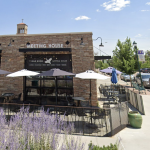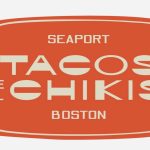The fast food and restaurant industry in California is witnessing job losses and restaurant closures due to a dip in profit margins. Last year, Assembly Bill 1228 came into effect, and a 25% rise in minimum wages for fast-food workers struck the industry. Small businesses and part-time workers are in a tough spot amid government decisions and ground reality.
Highlights
- The California government passed Assembly Bill 1228 to increase the minimum wage of fast food workers to $20 an hour.
- Since the bill came into effect, the state has had more than 22,000 workers who lost their jobs.
- The already existing distressing situation does not seem to improve in the near future as more cost cuts are expected this year.
AB 1228 and its Repercussions
The California government approved and passed Assembly Bill No. 1228 for the fast-food restaurant industry in 2023. The bill came into effect on April 1, 2024. An 11-member Fast Food Council was also formed to create and check industry standards for training and working conditions.
As per the bill, the minimum wage for workers in fast-food restaurants was set at $20 an hour. The bill was aimed at improving the conditions of workers. It focused on providing better working conditions, justified wages, and saving the workers from irregular schedules and wage theft.
Early research showed that the wages increased for workers with a modest increase in price for customers. However, with time, it became a controversial topic. Restaurants started facing troubles with costs, and employees started losing jobs.
Status of California Fast Food Jobs After a Year of AB 1228
The current situation of the fast-food restaurant industry in California is quite challenging. Since last year, the data on employment has shown a dip as people lose their jobs. 16,000 fast food jobs were lost last year. By now, the data has crossed 22,000. Even the delivery drivers have been replaced by third-party collaborations by restaurants.
The bill that aimed for upliftment has majorly faced losses. Not only did employees lose their jobs, but small businesses that used to operate on thin margins had to shut down as they were unable to manage the costs. Amid the uncertainties of 2025, restaurants are compelled to either cut employee hours and fire them or raise prices. Otherwise, the last option would be going out of business.
Even in these controversial situations, the Fast Food Council is planning to discuss a raise to $20.70. A lot of restaurant owners have sent their pleas to the Council and Governor as this would add to their adversity. High food prices and family-owned small local restaurants have already made the ground situation miserable.
It is not that the owners have an issue with the upliftment of worker conditions, but the highly competitive environment is a hindrance in the path. Despite the good attached to the bill, restaurants have to make harsh decisions to thrive in the market.
Dynamics in the Fast Food Industry in 2024
Originally, AB 1228 was to raise the wages to $22, but it was negotiated to $20. Even this narrowed decision led to layoffs in fast-food restaurants as they anticipated higher costs. Big chains like Pizza Hut also let go of 1,200 drivers last year.
Lawmakers also anticipated the situation and simultaneously offered exemptions for fast-food restaurants, especially in major public areas. But still, a 25% wage hike from $16 an hour to $20 an hour left people jobless. By June 2024, 10,000 jobs were lost, but the officials denied the data.
The current data report states a loss of 22,717 jobs in the fast food industry. The food prices in California also went up by 14.5%. In the state, 87% of fast-food restaurants are planning more cost-cutting. If it happens, the job losses will also go up. This is the last thing that the people of California will want.












